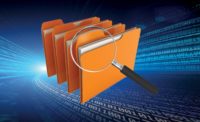Document control has been and continues to be a key element in ISO quality management system (QMS) standards. Without reliable control of procedures and records, a company's QMS integrity will fail as a practical business matter and as an easily audited computer system that enables compliance.
Two new ISO quality system standards have recently been released. One is the ISO 9000: 2000 Quality Management Systems, an update of the ISO 9000 series, which was last revised in 1994 and takes affect in December 2003. The other, ISO/TS 16949, is an international standard for automotive production and suppliers that incorporates the ISO 9001: 2000 requirements with existing QS-9000 requirements. This international standard was recently recognized by the Big Three automakers as the de facto standard for use beginning in 2004 for DaimlerChrylser and 2006 for General Motors and Ford.
At the heart of both standards is the requirement to establish strict guidelines that govern the approach to document control procedures. The standards require a company to define everything from how documents are approved prior to issue to how obsolete documents are identified and controlled.
In addition, the storage of QMS documents is an issue with both standards. An increasing number of software options are available to help companies meet document control and storage requirements. Following is a review of challenges associated with document control in general and how document control software simplifies the process enabling manufacturers to meet the new requirements.
Challenges of traditional document control
Traditional document control processes are often a combination of manual and electronic systems, which can result in a duplication of effort and additional expenditures of time.
In a traditional document control process, when documentation of a new procedure or modification of existing documentation is required, the collaborative effort to develop, review and approve this documentation is often conducted manually.
Document control and engineering change administrators typically receive change information in redlined hard-copy form. Many companies have document change or engineering change order (ECO) forms that may accompany the redlined documents. When engineering personnel initiate their own ECO form, they often are required to contact administrators to get the next sequential document or engineering change number to create a change package that contains the modified documents, any required forms and the information necessary to distribute the package for approval. As a result, administrators find themselves frequently involved in the initial development of these change packages instead of managing the overall process.
Companies that do not use electronic systems usually send or hand deliver these documents to the reviewer one after another until finalized. This serial process allows each reviewer to make changes or comments that subsequent reviewers can read. If more than one person is to receive information at a time -- a parallel step-document-control personnel must manually make copies of the change package. In this manner, hard-copy documents, from first draft to the released version, are initiated, routed for modification and compiled into a completed change package -- a tedious task and a document- control challenge.
Upon the completion of this manual process, the final documentation often is duplicated in an electronic system. Electronic approval routes are then used to distribute the change package for final review and approval. During this routing, the document is "locked down" so that the first approver sees the same document as the final approver. Approval routes are usually predefined based on the company's document-approval matrix and cannot be modified during the approval process.
Multiple bottlenecks can occur at different points in the routing process. Some potential bottlenecks occur during the copying and distribution of change packages; during manual tracking and reporting on the status of approvals; and delaying approval by key personnel, especially if they are not in the originating facility. Additional slowdowns can occur during the manual redistribution of packages modified during the routing process and while communicating these changes to all approvers. Finalization of the approval process can be slowed when training, as a result of new or modified procedures, is needed.
CAR drives documents
Corrective action requests place additional demands on change management. Besides basic document and engineering change processes, other processes require routing of documents or information. For example, if a company has a corrective action process, it should have the capability to initiate and assign corrective action requests (CARs) to responsible individuals or departments.
In ISO-based companies, the corrective action process includes a review step at the completion of the process to verify the effectiveness of the actions documented in the CAR. Internal or external auditors may perform the corrective action review function. Routing of the CAR information from initiators to responsible parties and reviewers usually requires a corrective action administrator who ensures corrective actions are being assigned, performed, reviewed and closed in a timely manner. The administration of the corrective action process is typically manually intensive and requires constant review and updating to ensure that all activities are completed.
Customer and supplier communications must be enabled by document control systems. Other processes that require routing of documentation relate to supply chain management. In a total quality system, there is a need for strong customer and supplier communications during the review and approval of initial requirements and when changes are made to products and processes. An example of this in the automotive industry is the QS-9000 Production Part Approval Process (PPAP). Suppliers are required to submit a change package to customers when a product or process is started or revised after approval. The supplier cannot implement any changes until the submission and a warrant form have been reviewed and approved by the customer. A PPAP process or equivalent requires significant investment in time and resources. Again, the process could be improved by reducing some of the time-consuming aspects associated with the manual process of hard-copy documentation preparation, distribution, and manual status tracking, notification and reporting.
Software addresses the challenge
Electronic document-control software can help manufacturers ease the burden created by a manual documentation process. Electronic change management processes simplify and streamline the document-control process. Some ways it does this include:
-
Collaboration to create quality documentation. Electronic document-control systems allow documents to be electronically sent to collaborators for review. Collaborators can be added and the sequence of steps on a collaboration route can be changed while in process. A final collaborator can review the redlined documents, compile a final version, and send the new or revised document to other approvers.
During this process, e-mail notifications can be automatically sent to those on the route and to the originator as the document moves through the document chain. Management and system users can monitor the status of the document along the collaboration and approval process. Route participants can receive daily reminders of pending tasks. Automatic notification, escalation and tracking visibility can decrease collaboration and approval-process cycle time.
-
Electronic approval, distribution, revision and removal. Document-control software can be used for electronic approval of documents. Documents can be electronically sent for approval in predefined and approved sequences in accordance with a company's approval matrix. Reviewers and approvers on the approval sequences can be set up in both serial and parallel steps.
Approvers can receive e-mail notification that documents are waiting for review and approval. During and after the approval process, notifications can be sent to affected employees. Escalation rules can be established that move the document to another person after a specified time period has expired to ensure documents keep flowing even when someone is not available. Document-control procedures can be written using a process approach that describes the electronic activities to initiate, review, approve and update controlled documents.
If hard copies are still needed, a company can either maintain "controlled copy" locations that can be tracked in the document-control software or allow controlled printing within predefined restrictions.
-
Control of user rights. Rights-based electronic systems can control access and user rights. Basic users may only be able to view documents related to their area. Advanced users can be given appropriate rights to create new documents and initiate changes. In old paper systems, all changes were sent through document- control personnel who were often an overloaded bottleneck in the process. With rights-based, document-control software, advanced users can be given appropriate access and rights to create new documents or make revisions in draft areas only. An advanced user can send a new document or revision for approval, and document-control personnel can be included in the review and release process to ensure process integrity. After approval, the document is moved into a released environment where basic users can view the new or updated document. Older versions automatically can be archived for historical purposes.
-
Automatic notification and training. Most electronic systems have the capability to send e-mail notifications to reviewers and approvers. Those affected by document changes can be included in routing sequences for training purposes prior to or after release of a document. Electronic records are kept of the approval process, including any additional training or notification events, by user identification, and date and time.
-
Secure storage and controlled access. Document-control software can be used to store QMS documents like the quality manual, procedures, drawings, work instructions, forms and records. Electronic document-control software programs often use a secure, access-controlled database to store files as opposed to hard-copy storage or network directories. Systems can be purchased that allow storage of all file formats. Native or alternate viewing options can be selected and controlled by the administrator based on the file format, viewing program availability, licensing and security needs.
-
Controlled Web access. Advanced document-control systems now include controlled Web access to documents. Users can be given controlled access to the document-control system via the Internet with document searching and viewing capabilities. In addition, remote users can participate in collaboration and approval processes. This allows traveling or off-site employees to stay involved and keep the document-control and change-management process moving effectively.
Many companies have taken advantage of controlled Web access to improve supply chain and customer involvement in the change-management process. With controlled Web access to documents, suppliers and customers can be added to route steps for review and approval during a change process. An advantage of customer-supplier Web access to documents can be found in the automotive industry where suppliers are required to submit production PPAP documents to the customer for change approval. Documents like drawings, reports, test results, control plans, flow charts and capability studies can be compiled in a cross-functional collaboration route and then electronically routed internally and externally for review and approval in accordance with customer requirements.
Document-control software can be a valuable tool that enables a company to consistently meet the requirements of ISO 9001: 2000 and ISO/TS 16949: 2002. While companies can meet these requirements using paper-based, manual systems, an increasing number of companies are moving from hard-copy and basic electronic systems to advanced document-control software solutions.
TECH tIPS
-
Document control software's collaborative capabilities often eliminate the need to conduct long team meetings to approve document changes.
-
With electronic approval, distribution, revision and removal, documents can be electronically sent for approval in predefined and approved sequences in accordance with a company's approval matrix.
-
Rights-based electronic systems can control access and user rights.
Software Speeds Document Control
Many benefits can be achieved by implementing an electronic document-control and change-management system.
"An electronic document-control system allows my company to benchmark between sister plants without having to leave our desks," says Mary Retcher, corporate QA administrator at Defiance Metals (Defiance, OH). "I do not have to travel as often because I can easily monitor document-control processes from corporate headquarters."
Rechter says that the benefits provided by the company's electronic document-control system include new corporate document-control plans and forms. Its collaborative capabilities have eradicated the need to conduct long team meetings to approve document changes. "Everyone knows when to change the master documents in his department with receipt of the document-approval e-mail notice," she notes.
"The system has provided a return on investment in less than six months by cutting down on labor hours and reducing supply costs," Rechter reports. "Since we installed this software, there have been no QS-9000 assessment audit findings in four manufacturing plants."
Process cycle times can be improved dramatically, according to Ray Goulet, a quality assurance engineer at Marchi System Inc. (Redwood City, CA), a thermal systems manufacturer. "Within three weeks of implementing an electronic document-control solution, I was able to report to our management staff that the ECO cycle had been cut from several days to just a couple hours."
Strict Guidelines
The newly revised ISO 9000: 2000 and ISO/TS 16949 standards establish strict guidelines for document control. The standards require a company to define:
-
How documents are approved prior to issue
-
How documents are reviewed, updated and re-approved
-
How changes and revision status are identified
-
How the correct version is made available
-
How documents are made legible and identifiable
-
How external documents are identified and controlled
-
How obsolete documents are identified and controlled


